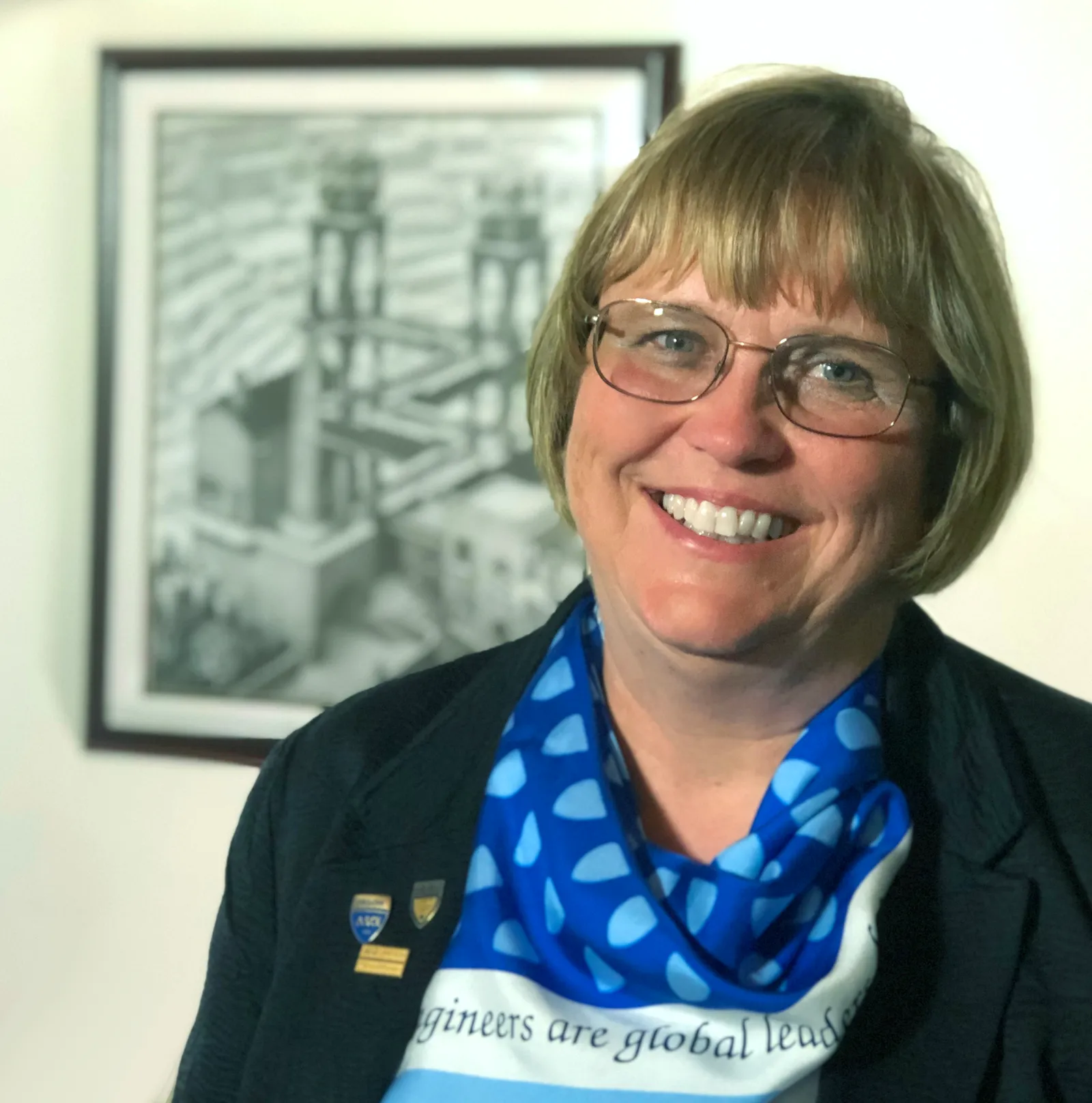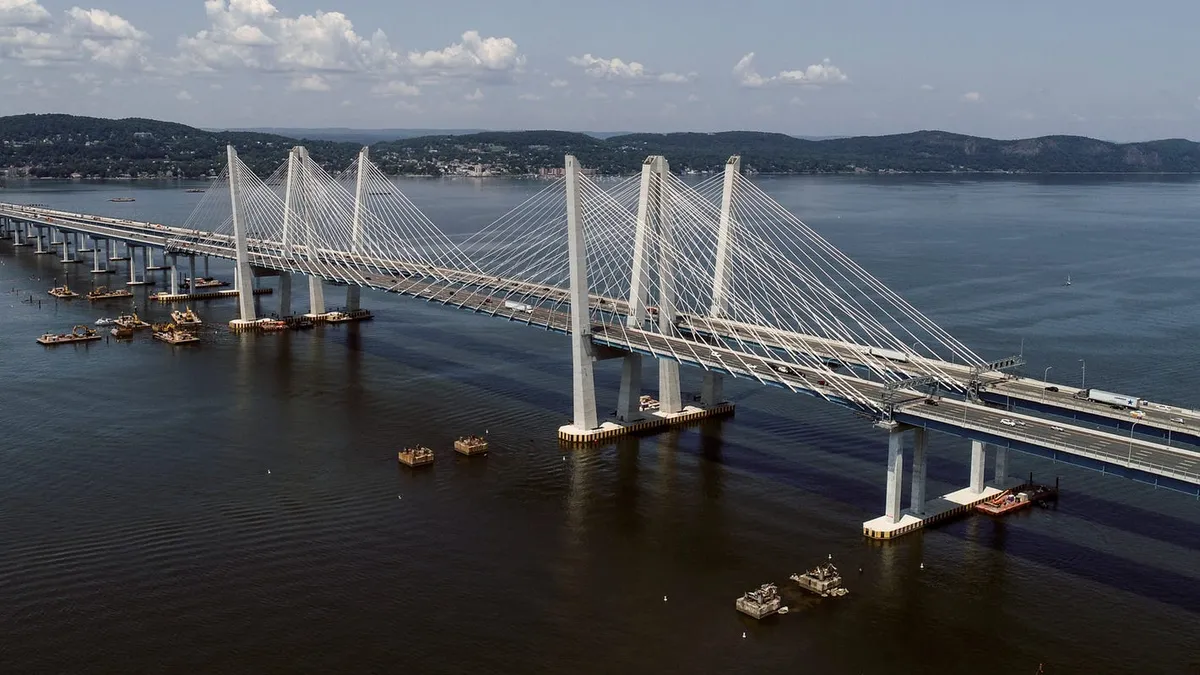With high levels of federal infrastructure investment buoying projects around the U.S., American Society of Civil Engineers President Maria Lehman said it’s a “very exciting time to be a civil engineer.”
The Infrastructure Investment and Jobs Act offers much-needed funding to help address the country’s vast repair backlog and to make structures more resilient to extreme weather, but the work is just beginning, according to Lehman.
“We now have the challenge to deliver: on time and on schedule while innovating to do things better, faster and cheaper, while providing sustainable and resilient infrastructure,” Lehman told Construction Dive. “We need to rethink everything we are doing to deliver.”

Lehman has been busy this year being “cheerleader-in-chief and disruptor-in-chief” for this vision, not only as ASCE’s president but as vice chair of President Joe Biden's National Infrastructure Advisory Council and New York legislative chair for the American Council of Engineering Companies. A licensed professional civil engineer who has worked in both private and public sectors, she's eager to champion the industry’s work and to push it forward. She is currently GHD Inc.’s infrastructure market leader for the U.S.
During her career, Lehman has contributed to a slew of high-profile infrastructure projects, including as risk manager and ultimately project executive for New York City’s $4 billion Mario Cuomo bridge. She has also worked in operations and maintenance in the public sector, first as commissioner of public works for Erie County, New York, and then as chief operating officer for the New York State Thruway Authority. She faced her largest challenges in these roles, twice having to deal with 7-foot snowstorms, and both times was able to return to business as normal in a day or two.
“Emergencies challenge everything you have learned as an engineering manager, as people’s lives demand that you make sound decisions,” Lehman said.
Here, Lehman talks with Construction Dive about the need for more and varied infrastructure investment, overlooked infrastructure problems, the importance of data collection and how delivery methods are changing on big projects.
Editor’s note: This interview has been edited for clarity and brevity.
CONSTRUCTION DIVE: What trends have you noticed in the past decade or so as ASCE has compiled its infrastructure report card grades?
MARIA LEHMAN: The greatest trend we saw consistently throughout the last few editions of the Report Card was insufficient support from the federal government for all 17 categories we assess. As our needs grew, federal funding failed to grow with them. For example, the federal government’s share of capital spending in the water sector fell from 63% in 1977 to 9% in 2017.
When we released the 2021 Infrastructure Report Card, which gave the U.S. a cumulative grade of “C-”, we estimated that all U.S. infrastructure systems faced a collective $2.6 trillion funding gap over the next 10 years.
The $550 billion in new spending from the IIJA will certainly help matters, but it’s not the federal government’s sole responsibility to close that gap — we also need buy-in from states, localities and the private sector. We still have a ways to go to cover our current and future needs.
What infrastructure problems aren't getting as much attention as they deserve?
Luckily there have been more productive discussions about issues such as gaps in available workforce and how infrastructure plays a role in climate change and what we can do to mitigate environmental risks, but certain sectors are notoriously under-represented in infrastructure dialogues.
Dams and levees, for example, are incredibly underfunded and don’t have enough staff nationwide to carry out necessary inspections or the resources to keep up with routine maintenance. These structures protect trillions in assets and keep more than 4,500 schools from flooding.
A problem in both of these sectors, which also applies to a variety of others, is the lack of available data we have on these structures and their condition. There’s over 10,000 miles of levees whose conditions are unknown throughout the country. That lack of knowledge prevents agencies from taking action and ensuring a levee can withstand a storm surge, which leaves communities vulnerable.
Proper data collection is imperative for engineers if we want to keep the public safe.
As vice chair of President Biden’s Infrastructure Advisory Council, what are the biggest challenges you’re seeing to implementation of the IIJA and other infrastructure efforts?
The biggest challenges we’re seeing are the lack of skilled workers entering the civil engineering profession and insufficient workers available for major projects that are ready to be undertaken now. Not only do we have workforce shortages for existing projects, but we’re expecting a large percentage of our experienced engineers to retire within the next decade — a “Silver Tsunami” if you will — and don’t have enough people to fill those roles.
Funding is great, but it only means something when you have the right people to put it to good use.
Other factors complicating the implementation of the bill include inflation, which is hitting construction costs and worker salaries and ultimately reducing the spending power of the bill. Supply chain issues are also still a problem: Oftentimes much-needed supplies are either unavailable or delayed, slowing down the work we can get done.
These issues underscore the importance of quick and efficient implementation so that we get the most bang for our buck.
Are you noticing any shifting trends in delivery methods for big infrastructure projects?
We are seeing many different delivery systems, not just design-bid-build and design-build, but construction manager at risk, design-build-operate-maintain, design-build-finance-maintain, etc. With so much of our infrastructure not in a mid-life crisis, but an old-age crisis, we need every tool in the tool box. We need to leverage user fees, local, state, tribal and federal money with private sources of finance and equity.
Every project has different technical needs, but also different geopolitical, social and environmental justice needs as well as varied funding and finance needs. We as a profession need to get smart to the various models so we can optimize the funding stack for any given project. One size fits none.





















